Celebrate 10 Years of Tree Campus Recognition at UF
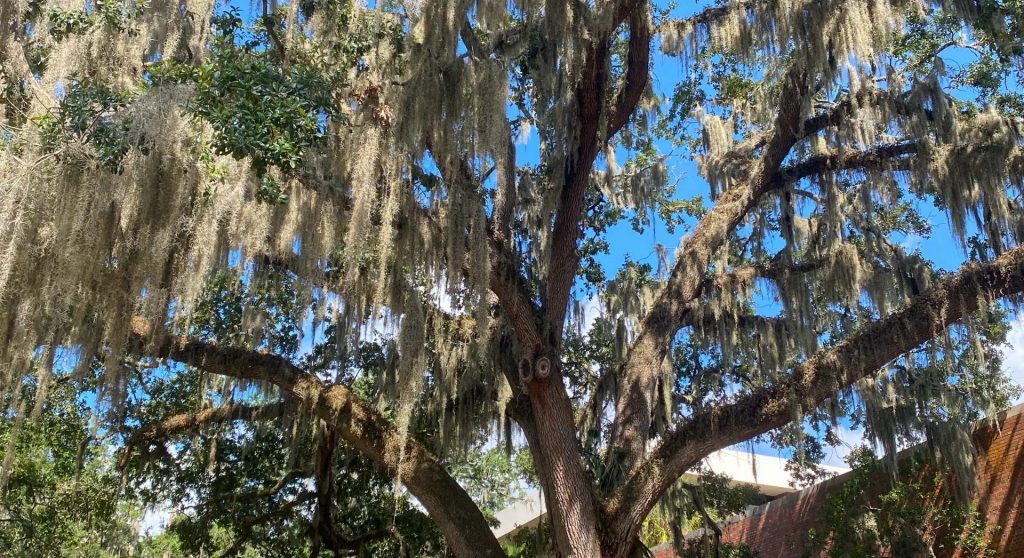
On a sunny day in Gainesville, students flock to campus to set up their hammocks, grab a shady spot to study, or simply sit down under a tree with their friends to relax.
From the picturesque live oaks in the Plaza of the Americas to the loblolly pines around Lake Alice, there’s no shortage of stunning trees to admire on the UF campus.
In fact, UF has received the Tree Campus Higher Education recognition from the Arbor Day Foundation for 10 consecutive years!
But do you know what it really takes to be a Tree Campus?
The Making of A Tree Campus
It’s no secret that the UF campus is full of beautiful, majestic trees that help create the pleasant, natural environment that the UF community holds dear to its heart.
In 2013, UF received its first Tree Campus designation thanks to a determined group of students.
Yes, you heard that right. It was in fact an ambitious student group that submitted the initial application to meet the criteria necessary to obtain the Arbor Day Foundation’s recognition.
Liz Storn, Senior Program Coordinator for the Office of Sustainability, was new to her role at UF at that time. She shares, “It was a powerful introduction for me to the dedication that UF students have to shape the campus for good!”
Now, Liz is the Office of Sustainability staff member responsible for facilitating the Tree Campus submission each year and amplifying the tree-related work occurring across campus.
The People & Plans Behind The Trees
The Tree Campus designation, most recently awarded for 2022, requires a yearly application. Collaboration of an entire team of people is needed to put together the different pieces of the application and ensure that the commitment to trees at UF can continue its decade-long legacy.
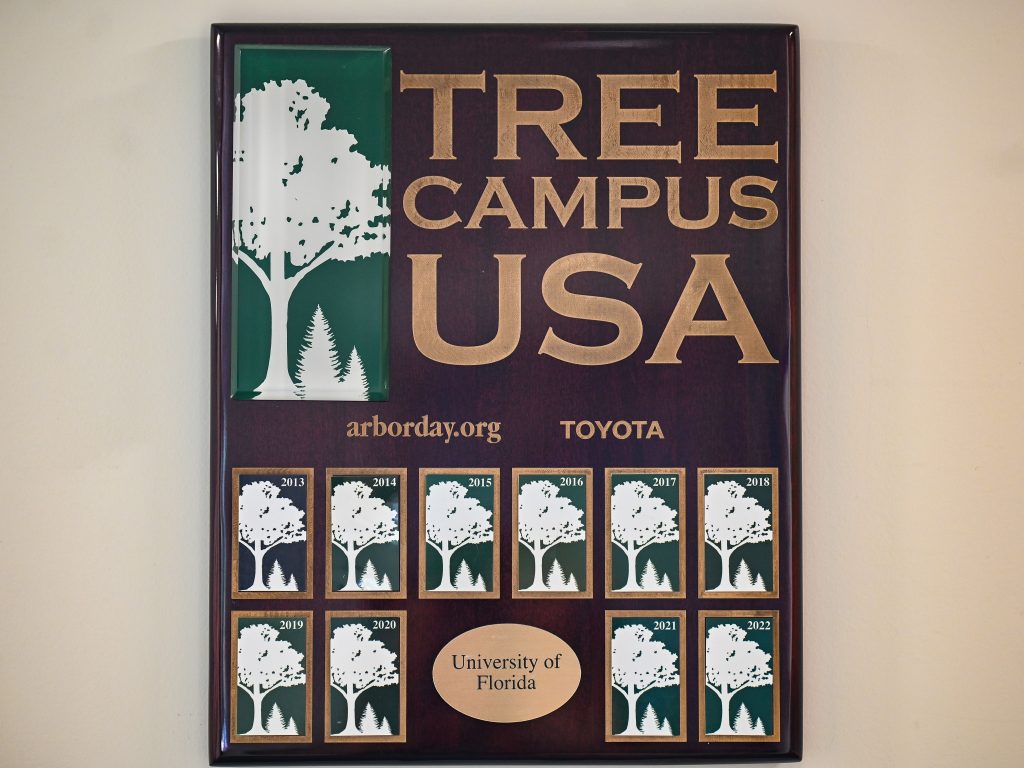
First and foremost, Facilities Services lays the foundation for keeping the UF campus beautiful and safe. Their efforts at tree planting, pruning, and general maintenance contribute to meeting the requisite Tree Campus standards. Given the size of our campus and sheer number of trees, this is a significant undertaking!
Donna Bloomfield, Grounds Superintendent, also plays an instrumental role in the Tree Campus preparation process. Donna has been the Office of Sustainability’s primary contact for tree-related data over the years. She is a highly responsive and helpful staff member that draws upon her deep campus knowledge to get the answers needed to support tree-related projects.
The Lakes, Vegetation, and Landscaping Committee is another crucial part of the Tree Campus certification each year. This committee reviews all projects related to trees on campus, examining the compatibility of new projects and changes with the existing trees and vegetation.
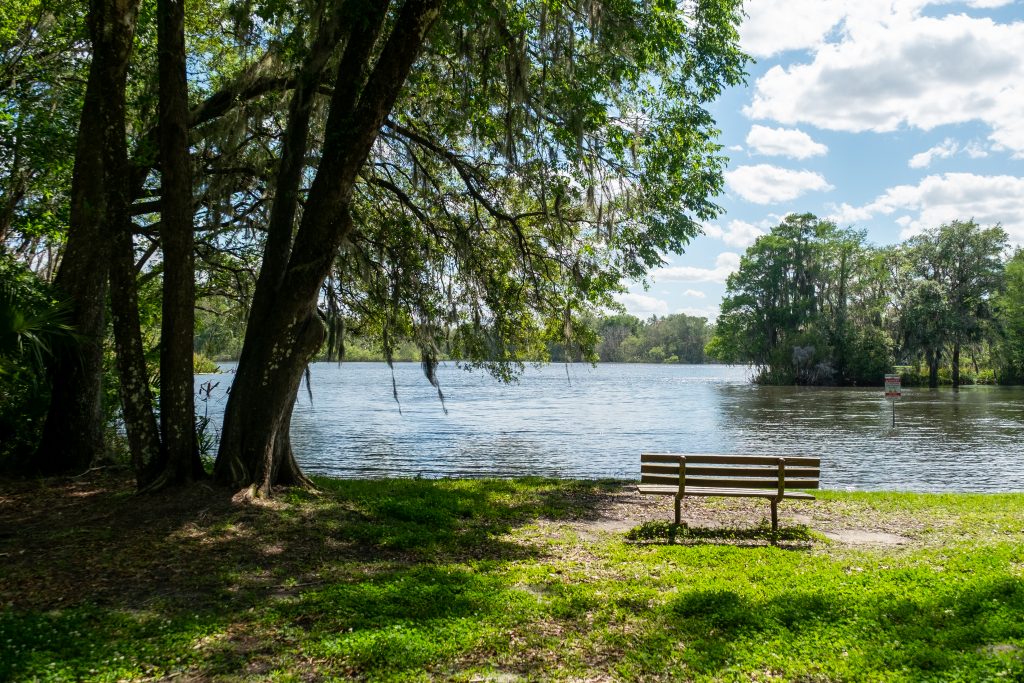
Finally, countless individuals work behind the scenes to contribute to the various plans and policies that provide the framework of our Campus Tree Care Plan, a mandatory standard for Tree Campus Recognition. These plans keep UF’s natural environments protected by looking into the future.
The CALM (Conservation Area Land Management) Plans preserve and publicize UF’s often tree-dense conservation areas so they can be used for recreation, education, and research efforts. Additionally, the Campus Master Plan includes a goal to “utilize landscaping and tree canopy to enhance the campus environment and reflect the University’s ecological setting.”
One thing is for sure – it takes the entire UF community to keep up the ongoing streak of the Tree Campus recognition year after year!
Maintaining The Tree Campus Standards
The Tree Campus designation requires that universities meet the five core standards developed to promote healthy trees and student involvement:
1.Establishment of a tree advisory committee.
2.Evidence of a campus tree-care plan.
3.Verification of the plan’s dedicated annual expenditures.
4.Observing Arbor Day.
5.Creating a service-learning project aimed at engaging the student body.
These core standards are the foundation for deeply embedding a true sense of ownership and appreciation for nature and vegetation in the community.
Most notably, UF excels at the service-learning standard due to its excellent record of service on campus.
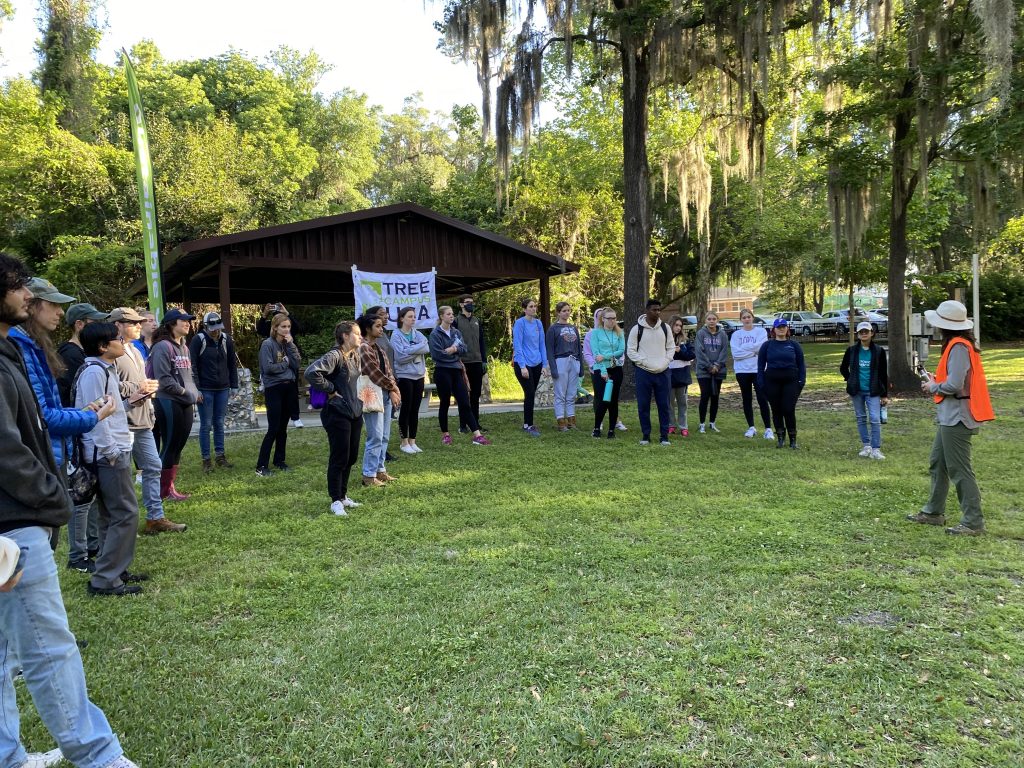
“My favorite events that UF does to meet the Service Learning requirements are some of the conservation area clean-up events,” says Storn.
At conservation area clean-ups, participants learn about invasive species and their impact on the trees in the area, as well as information on trash and recycling. As they proceed through the clean-up event, participants see the immediate difference when piles of materials are pulled out of the conservation areas. The amount of litter has slowly been reduced over time!
Enhancing The UF Campus One Tree At A Time
Other service events have included faculty who have taken the initiative to develop tree-planting events for the community.
There are numerous benefits of planting trees not just on campus but across the world.
Our trees:
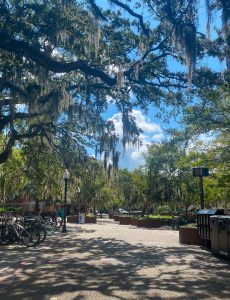
- Clean our air and water.
- Bring the beauty of nature to spaces where we live, work, play, and learn.
- Improve our mental and physical health.
- Help us fight climate change.
Shade from trees cools pathways, outdoor learning, and recreation areas, and reduces cooling needs for buildings. For anyone who has walked from Tigert Hall to the Reitz Union on a July afternoon in Gainesville, you know just how important it is to select the route with the most tree cover!
Trees also provide habitat, food, and shelter for a wide range of animal species at UF.
Here’s To Another 10 Years!
As you spend time on campus, take an extra second to appreciate the story behind the nature surrounding you. What work does it take to make sure this environment remains for all future Gators to experience? How can you make sure the wide-reaching impact of sustainability practices is preserved on campus for the next 10-year span?
